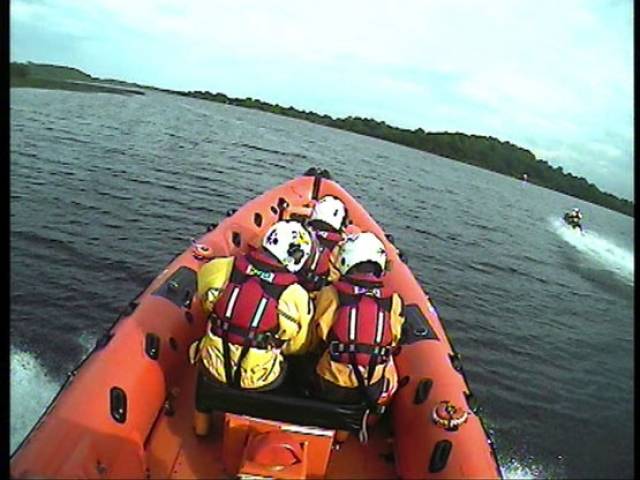#RNLI - Carrybridge RNLI attended three different incidents – one involving a fire – on Upper Lough Erne this past Saturday (11 June).
The inshore lifeboat and rescue wafer craft were initially tasked to a burning vessel at 6.08pm, two miles north of Belturbet. Both Belturbet and the NI Fire and Rescue Service were in attendance.
The four people onboard were safely removed from the boat by a passing vessel and brought to shore. The 25ft Bayliner later burnt itself out and sank into shallow waters close to the shoreline.
The volunteer crew were then tasked by Belfast Coastguard to a boat with engine problems 1.5 miles from Knockninny. The sports cabin cruiser and its four passengers and their dog were brought to safety at Knockninny Marina.
The third tasking saw Carrybridge RNLI going to a vessel that ran out fuel close to the Share Centre. The 22ft vessel and its passenger were brought to safety of the Share Centre Marina.
The lifeboat and rescue craft returned to station at 9.15pm.
Speaking following the callouts, Carrybridge RNLI helm Chris Cathcart said: "The crew of the burning vessel did the right thing by alerting the coastguard straight way when their vessel went on fire.
"They made sure they had their lifejackets on and evacuated their vessel to another passing vessel as soon as possible."
Cathcart also commended the crews of the further two vessels the lifeboat assisted for their quick thinking when they found themselves in danger.
"The importance of alerting the coastguard as soon as possible in all cases help saves lives and prevented the situation from developing into something more serious on all our callouts."
The busy evening for the volunteer crew was in the first weekend of the RNLI’s summer campaign #RespectTheWater that targets accidental drowning along Northern Ireland’s coastline and inland waterways.
Respect the Water urges the public to watch out for the key dangers that can catch people out in or near the water. The campaign which will run throughout the summer months aims to highlight the risk of accidental drowning when people are near the water’s edge while encouraging safer behaviour both in and around the water.
































































